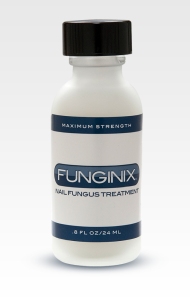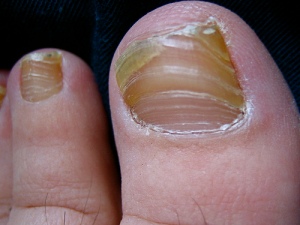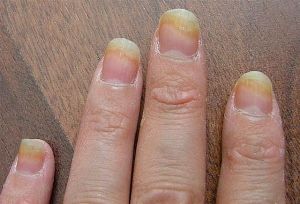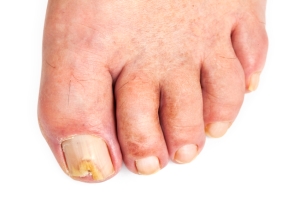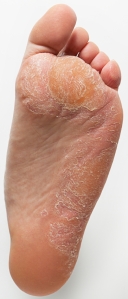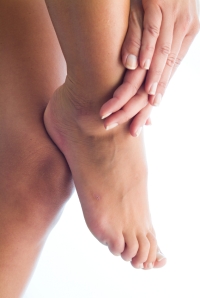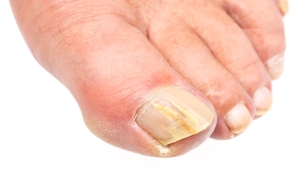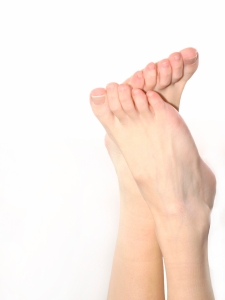What Exactly Is Nail Fungus?
Nail fungus, also referred to as Onychomycosis, is a fungal infection that gets under the fingernails or toenails. It causes the infected nail to thicken, become brittle and/or change color. When nails are infected, they can often look dark, yellow or often crumpled and wavy. Nail fungus grows in warm, dark, damp places, which makes the inside of shoes and/or socks ideal. Infections will often start out as a white or yellow spot on the toe or fingernail.
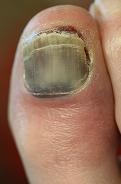 Gradually the infection will spread as the nail fungus works its way underneath the nail and down into the nail bed. Once the infection has gotten this far, it becomes substantially harder to combat since it now has a “hiding” place. The infected nail will then often become yellowish and more wavy, and it may start to crumble or flake off around the edges. Ultimately, if left untreated, the nail will become dark or black and become noticeably disfigured. This is when the toenail fungus infection begins to get rather unsightly and can also begin to be somewhat painful as the nail begins to fall apart or even begin to die entirely.
Gradually the infection will spread as the nail fungus works its way underneath the nail and down into the nail bed. Once the infection has gotten this far, it becomes substantially harder to combat since it now has a “hiding” place. The infected nail will then often become yellowish and more wavy, and it may start to crumble or flake off around the edges. Ultimately, if left untreated, the nail will become dark or black and become noticeably disfigured. This is when the toenail fungus infection begins to get rather unsightly and can also begin to be somewhat painful as the nail begins to fall apart or even begin to die entirely.
What Are The Causes Of Nail Fungus?
As a person becomes older, the risk of contracting a nail fungus infection increases. One reason for this is that blood circulation often dissapates with age. Another factor is simply more time spend in environments where nail fungus infections are found. Places like public locker rooms, gyms, nail salons and showers are all potentially risky locations. In addition, nails get thicker and grow more slowly as we age, which adds to the potential for contracting nail fungus.
If the immune system is compromised in any way, this will increase the risk of nail fungus as well since the body is not at full strength to combat invading fungal agents. Accidentally damaging your nail by slamming it in a door or hitting it with something can also make it easier for the nail fungus to invade as frequently this causes the nail to fall off which gives the fungus access to the nail bed.
What Are The Most Common Places To Get Nail Fungus?
Most people have nail fungus on their toenails because feet spend more time covered up and in warm environments than hands. The shoe is an ideal  breeding environment for nail fungus, as it is usually damp and warm as well as dark. As mentioned previously, feet are frequently exposed to nail fungus when we walk around public showers, locker rooms or swimming pools.
breeding environment for nail fungus, as it is usually damp and warm as well as dark. As mentioned previously, feet are frequently exposed to nail fungus when we walk around public showers, locker rooms or swimming pools.
People who spend a great deal of time with their hands in water or damp gloves become more exposed to fingernail fungus infections. Nail salons that don’t disinfect their tools can become the source of an epidemic of nail fungus. It is easy for nail fungus to be spread from one client to the next if the tools are not cleaned in between customers by sterilizing them. People who get pedicures face the same risks if the basins where people soak their feet are not properly cleaned as well.

